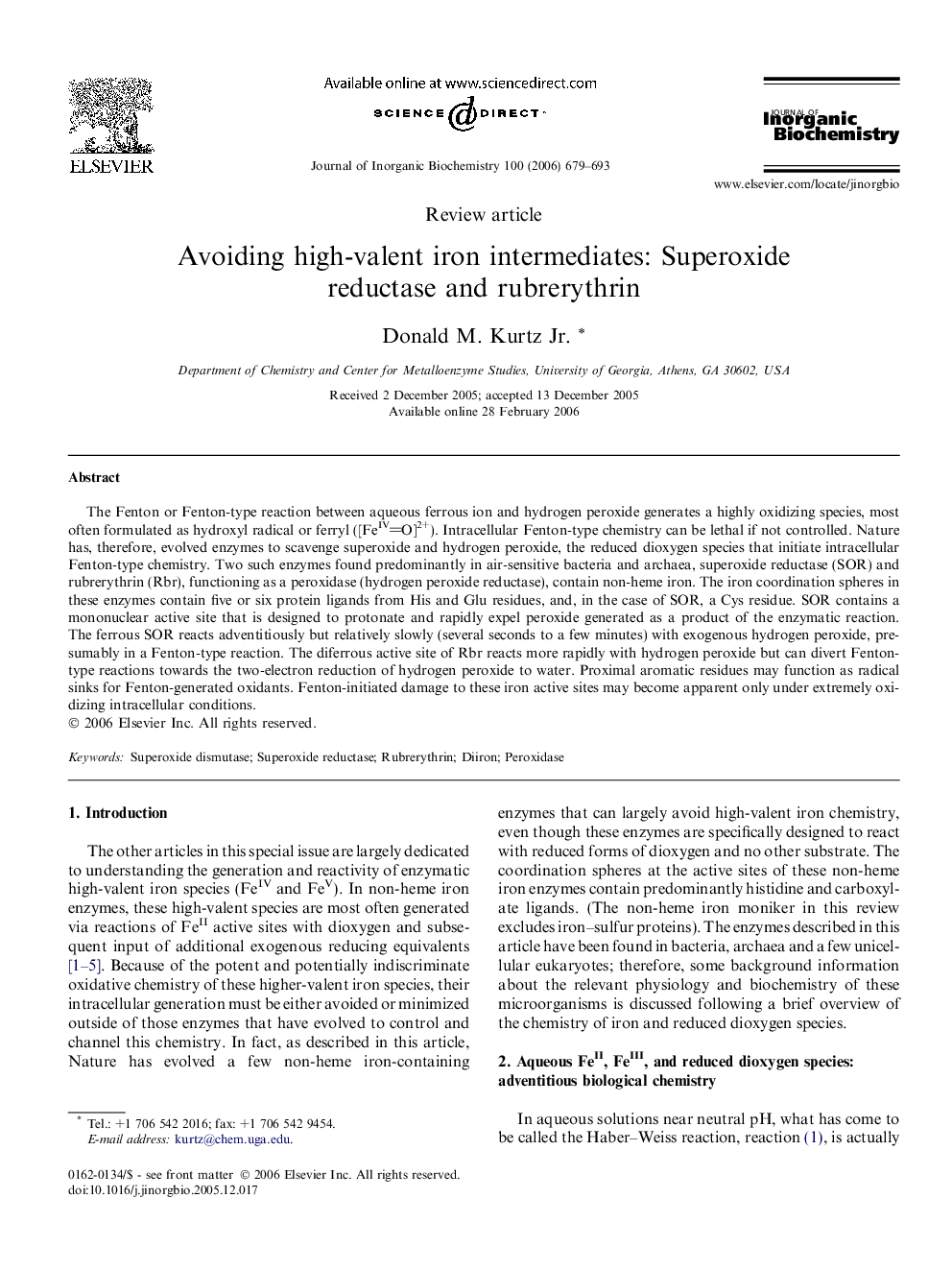| Article ID | Journal | Published Year | Pages | File Type |
|---|---|---|---|---|
| 1317651 | Journal of Inorganic Biochemistry | 2006 | 15 Pages |
The Fenton or Fenton-type reaction between aqueous ferrous ion and hydrogen peroxide generates a highly oxidizing species, most often formulated as hydroxyl radical or ferryl ([FeIVO]2+). Intracellular Fenton-type chemistry can be lethal if not controlled. Nature has, therefore, evolved enzymes to scavenge superoxide and hydrogen peroxide, the reduced dioxygen species that initiate intracellular Fenton-type chemistry. Two such enzymes found predominantly in air-sensitive bacteria and archaea, superoxide reductase (SOR) and rubrerythrin (Rbr), functioning as a peroxidase (hydrogen peroxide reductase), contain non-heme iron. The iron coordination spheres in these enzymes contain five or six protein ligands from His and Glu residues, and, in the case of SOR, a Cys residue. SOR contains a mononuclear active site that is designed to protonate and rapidly expel peroxide generated as a product of the enzymatic reaction. The ferrous SOR reacts adventitiously but relatively slowly (several seconds to a few minutes) with exogenous hydrogen peroxide, presumably in a Fenton-type reaction. The diferrous active site of Rbr reacts more rapidly with hydrogen peroxide but can divert Fenton-type reactions towards the two-electron reduction of hydrogen peroxide to water. Proximal aromatic residues may function as radical sinks for Fenton-generated oxidants. Fenton-initiated damage to these iron active sites may become apparent only under extremely oxidizing intracellular conditions.
